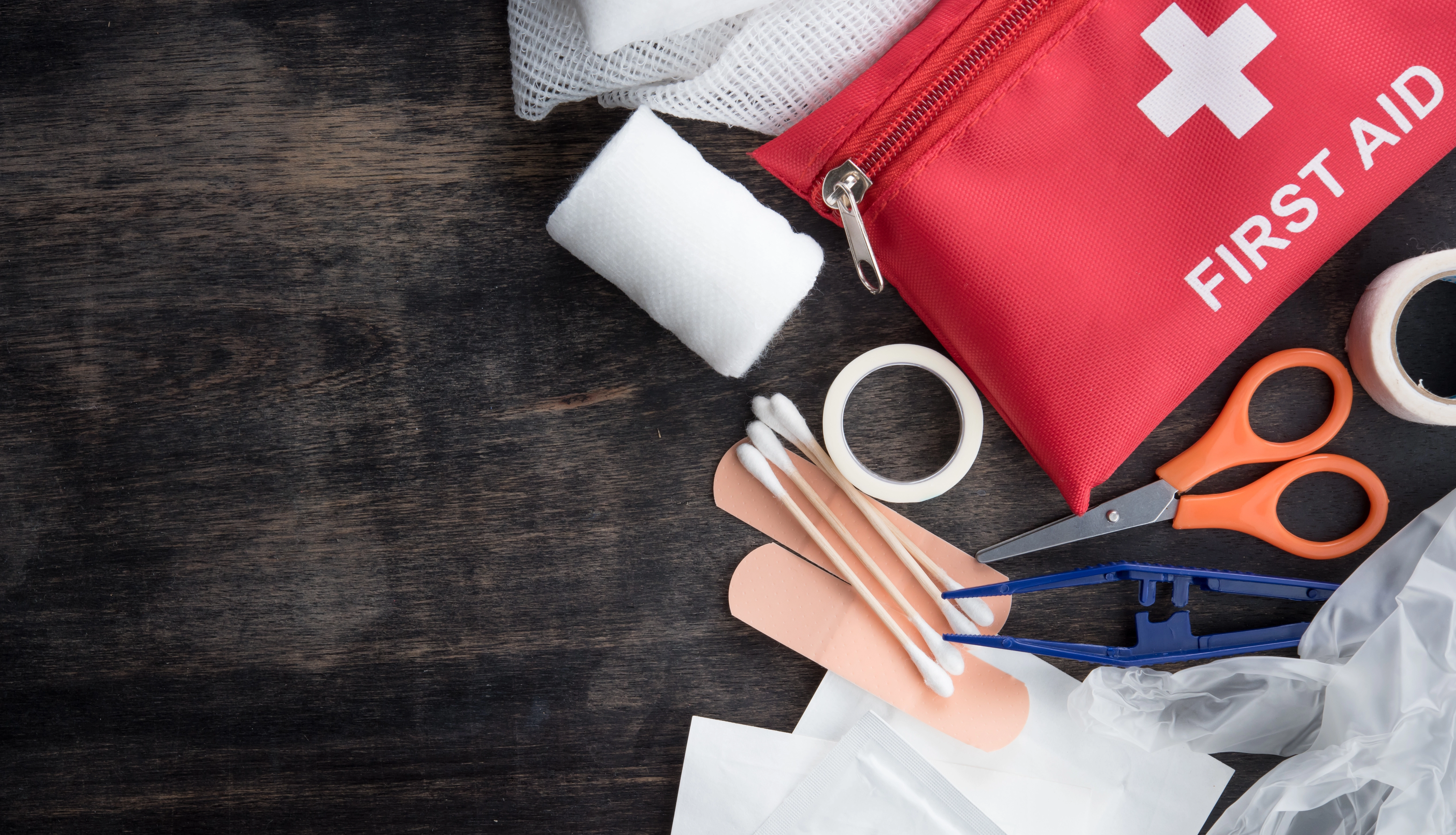What's in Your Store's First-Aid Kit?

Nobody wants an accident to occur at their business, but that doesn’t mean you shouldn’t be prepared for one. In 2022, retail ranked second on a list of nonfatal occupational injuries by industry, with over 400,000 cases. The only industry with more injuries and illnesses was heath care and social assistance (650,000).
While retail may seem like a low-risk industry, it has a similar incidence rate—3.2 per 100 full-time workers—to both construction and manufacturing.
Though it’s not always possible to prevent injuries, preparing a first-aid kit is a good line of defense that can help keep incidents from getting out of hand. OSHA standards do not require specific first-aid kit contents. However, American National Standards Institute (ANSI) has established a guideline, which is included below. Notice, they do not list any medications. While it may seem counterintuitive to omit over-the-counter pain medications, any medication carries with it the risk of a reaction. It’s best to leave that to the injured party or emergency services.
A CPR barrier device is included in the second list below. New CPR guidelines were introduced in 2015 that recommend untrained bystanders perform hands-only CPR. It is recommended to have someone trained in CPR available at your business. A properly trained person should perform CPR including breaths. If no one is available who has been trained, be sure everyone in your business knows that hands-only CPR is better than no CPR at all.
What you should definitely include in a first-aid kit:
- 16 adhesive bandages, 1” x 3”
- 10 antiobiotic treatment application, 1/57 oz
- 10 antiseptic applications, 1/57 oz
- 1 breathing barrier
- 1 burn dressing, gel soaked, 4” x 4”
- 10 burn treatment, 1/32 oz
- 1 cold pack
- 2 eye covering
- 1 eye wash
- 1 first-aid guide
- 6 hand sanitizer, 0.9g
- 2 pair exam gloves
- 1 roller bandage, 2” x 4 yards
- 1 scissors
- 2 sterile pad, 3” x 3”
- 2 trauma pad, 5” x 9”
- 1 triangular bandage, 40” x 40” x 56”
Additional items you may want to consider:
- 50 adhesive bandages, 1”x 3”
- 2 adhesive tape, 2.5 yards
- 25 antibiotic treatment application, 1/57 oz
- 50 antiseptic applications, 1/57 oz
- 1 breathing barrier
- 2 burn dressing, gel soaked, 4” x 4”
- 25 burn treatment, 1/32 oz
- 2 cold pack
- 2 eye covering
- 1 eye wash, 4 oz
- 1 first aid guide
- 10 hand sanitizer, 0.9g
- 4 pair exam gloves
- 2 roller bandage, 2” x 4 yards
- 1 roller bandage, 4” x 4 yards
- 1 scisors
- 1 splint, 4” x 24”
- 4 sterile pad, 3” x 3”
- 1 tourniquet
- 4 trauma pad, 5” x 9”
- 2 triangular bandage, 40” x 40” x 56
Having a well-stocked first-aid kit is essential for any business, especially in retail where accidents are more common than you might think. By preparing for potential injuries, you can ensure a safer environment for your employees and customers. Regularly check and replenish your first-aid supplies to stay compliant with ANSI guidelines and ready for any emergency. Remember, safety preparedness is not just a regulatory requirement but a commitment to the well-being of everyone in your workplace. Stay safe and proactive!
For more detailed information, visit OSHA's first-aid requirements.
An insurance company that cares about you and insuring the things you wish to be insured.
Get a Quote> Find an Agent>

